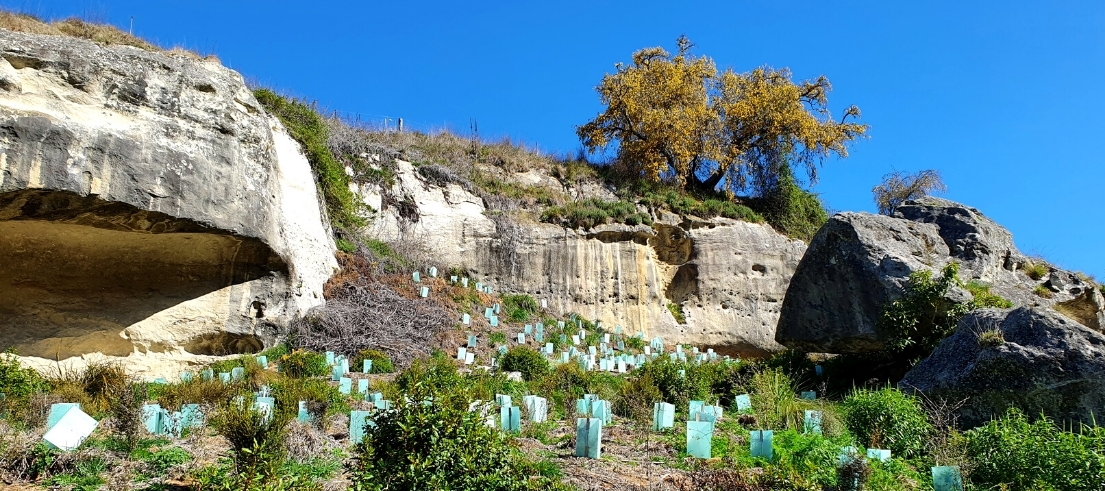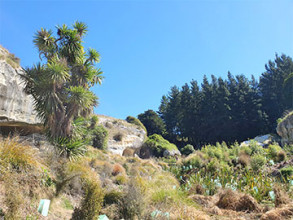
Taniwha Gully ancient rock art protected by funding
Ancient rock art, including a taniwha on the ceiling of a cave near Pleasant Point, will be further protected thanks to $14,000 of Immediate Steps biodiversity funding over two years.
The area, a 10ha property leased by the Ngāi Tahu Māori Rock Art Trust named Taniwha Gully, has important cultural values and includes a group of 13 nationally significant Māori rock art sites.
The Trust approached the Orari Temuka Opihi Pareora (OTOP) Water Zone Committee recently, who in turn supported the allocation of funding by Environment Canterbury.
The property has a QE II National Trust covenant placed over it, meaning the land in the covenant is protected forever and contains three Significant Natural Areas listed with the Timaru District Council.
Contributing to the protection of a nationally significant site

Plantings at Taniwha Gully
Ngāi Tahu Māori Rock Art Trust chair Jill Kitto said this area is of “the highest cultural significance” to Te Rūnanga o Arowhenua and to Ngāi Tahu whānui.
“[That’s because] it’s a place where our tīpuna created rock art and utilised for mahika kai (the collection of resources).
“These two practices are intertwined, and so it is important for us to reflect that in the restoration of the site, and in the community education programme delivered by Te Ana Ngāi Tahu Rock Art Centre at this property,” she said.
Kitto said this forms a firm foundation for the protection and care of 761 Māori rock art sites found throughout Te Waipounamu/the South Island.
Funds to be used for planting, restoration, protection and more
Taniwha Gully has extensive chalky cliffs and scarps. Like many areas of limestone, the ecology of the area has been degraded by changing land use and pest plants. It is the goal of the Zone Committee to restore and protect the site.
Ecological restoration has been undertaken by the Trust since 2016. The Immediate Steps biodiversity funds will focus on the control of woody weeds, in conjunction with a planting programme to achieve:
- re-establishment of indigenous vegetation
- ecological restoration and improved functioning of valley floor wetland
- protection of local Māori rock art
- development of an educational site with the aim of raising awareness of both mahinga kai and tuhituhi o neherā as cultural practices and to continue these practices in current and future generations.
Ticking off goals for the Zone Committee
This project meets some of the Zone Committee’s agreed outcomes, such as investing in projects that have sufficient scale to make a long-term impact.
Priorities of these projects are lowland streams and lagoons where initiatives contribute to water quality; and activities that enhance biodiversity habitat, mahinga kai and sports fisheries.
OTOP Water Zone Committee chair Lucy Millar said it is great to see projects put forward which tick off many of the Committee’s targets and outcomes.
“This project is not just partly, but fully in line with our agreed outcomes,” she said.
“We always look forward to these types of projects, it’s a great example of a worthy project in need of some Immediate Steps funds. This is potentially really significant, not just for South Canterbury but for educating the whole country,” Millar said.
